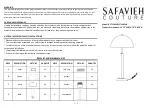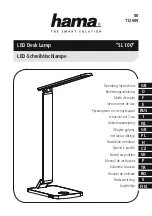
00041214.DOC, Version 1.0
29/32
5.6 DMX-512 connection / connection between fixtures
The wires must not come into contact with each other, otherwise
the fixtures will not work at all, or will not work properly.
Please note, the starting address depends upon which controller is being used.
Only use a stereo shielded cable and 3-pin XLR-plugs and connectors in order to connect the controller with
the fixture or one fixture with another.
Occupation of the XLR-connection:
If you are using controllers with this occupation, you can connect the DMX-output of the controller directly
with the DMX-input of the first fixture in the DMX-chain. If you wish to connect DMX-controllers with other
XLR-outputs, you need to use adapter-cables.
Building a serial DMX-chain:
Connect the DMX-output of the first fixture in the DMX-chain with the DMX-input of the next fixture. Always
connect one output with the input of the next fixture until all fixtures are connected.
Caution:
At the last fixture, the DMX-cable has to be terminated with a terminator. Solder a 120
resistor
between Signal (–) and Signal (+) into a 3-pin XLR-plug and plug it in the DMX-output of the last fixture.
You can control the devices individually via your DMX-controller. Every DMX-channel has a different
occupation with different features.
5.7 Addressing
Each projector occupies 7 channels. To ensure that the control signals are properly directed to each
projector, the projector requires addressing. This is to be adjusted for every single projector by changing the
DIP-switches as set out in the table below.
The starting address is defined as the first channel from which the device will respond to the controller.
Please make sure that you do not have any overlapping channels in order to control each device correctly
and independently from any other fixture on the DMX data link. If two, three or more projectors are
addressed similarly, they will work similarly.




































